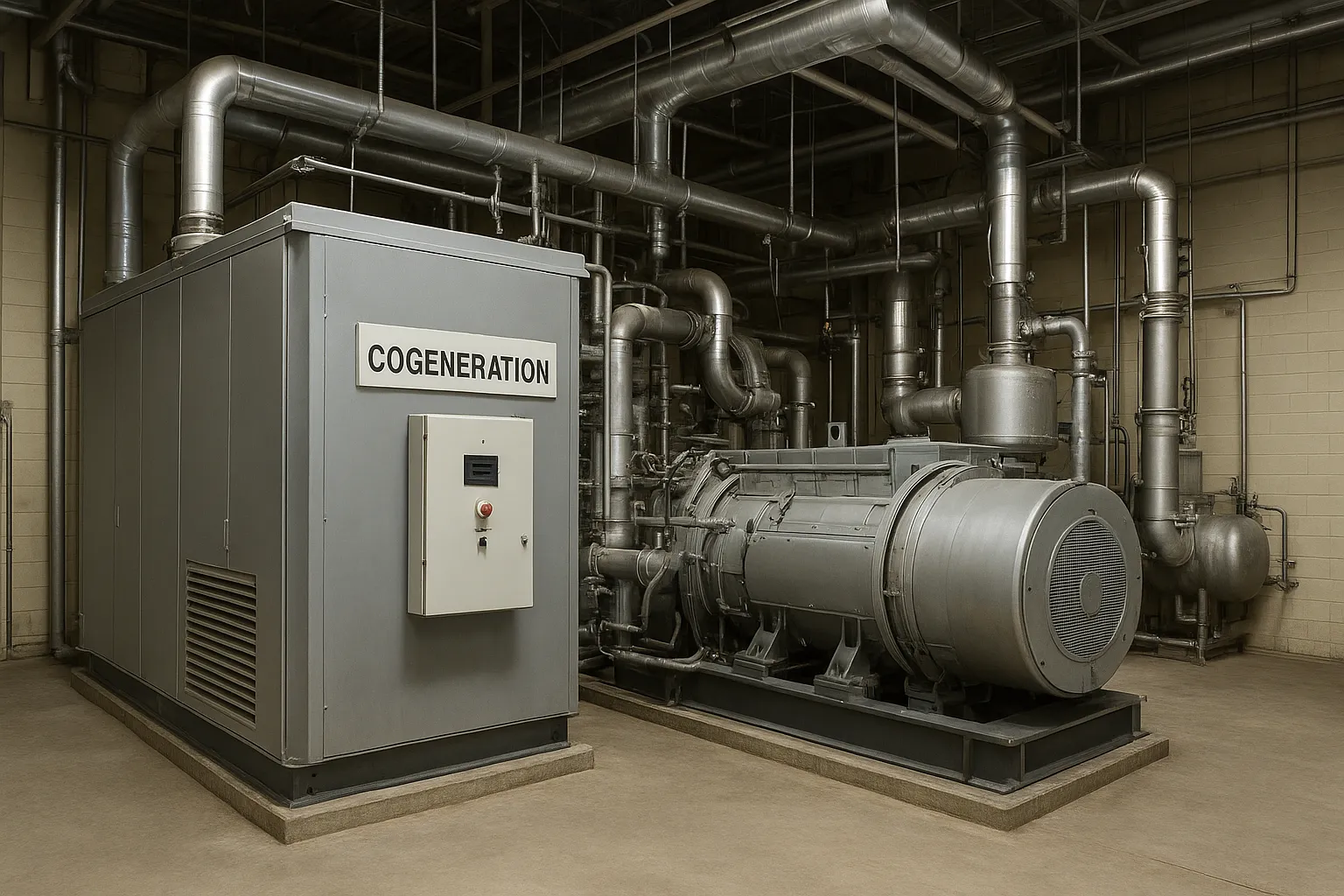
Cogeneration: what it is, how it works and where it is used
In a world of rising energy prices and the need to improve energy efficiency, cogeneration is becoming one of the key solutions. In this article, we will look at what cogeneration is, its pros and cons, and its application in district heating.
Cogeneration is a...
Cogeneration — is the process of simultaneous production of heat and electricity within a single energy cycle. This results in a high efficiency (coefficient of performance), which can exceed 80-90%.This approach allows for the most efficient use of fuel (gas, biomass, coal, waste), reducing energy losses during its production and transportation.
Advantages and disadvantages of cogeneration
Cogeneration: pros and cons for different sectors of the economy, especially utilities:
Advantages of cogeneration:
- Fuel savings of up to 30% compared to separate heat and power generation
- Reduction of CO₂ and harmful substances emissions
- High efficiency of power plants
- Independence from centralized sources
- Flexible use of different fuels
Cons of cogeneration:
- High initial cost of installation
- The need for constant consumption of both heat and electricity
- Complexity of maintenance and the need for qualified personnel
Cogeneration in municipal heat supply
In the housing and utilities sector, cogeneration in municipal heat supply helps to reduce the costs of heating networks, reduce the load on the power grid and make heat more affordable for consumers.
For example, the city of Kharkiv is already implementing cogeneration units based on CHP plants, which allows for more efficient supply of heat and electricity to neighborhoods, especially during peak periods of load.
Who should consider cogeneration?
Cogeneration solutions are recommended for municipalities, businesses, residential complexes, hospitals and educational institutions. They are especially effective in cases where there is a stable consumption of heat and electricity throughout the year.
Conclusion
Cogeneration is an efficient and environmentally friendly approach to energy supply. Despite certain technical challenges, it has great potential for the municipal energy sector in Ukraine. If properly designed and implemented, it is a quick payback investment.
.png)

